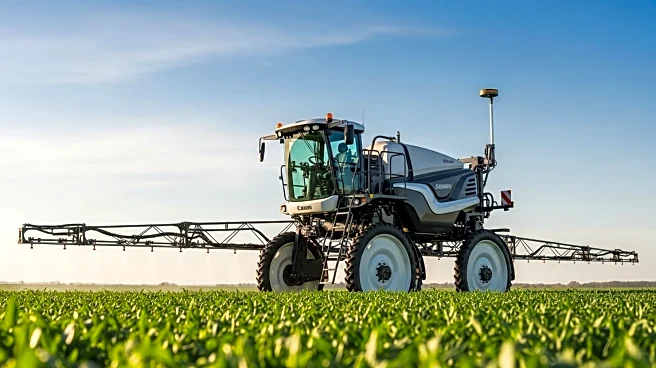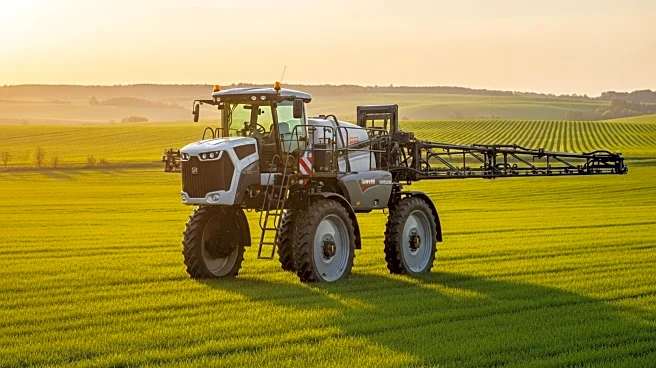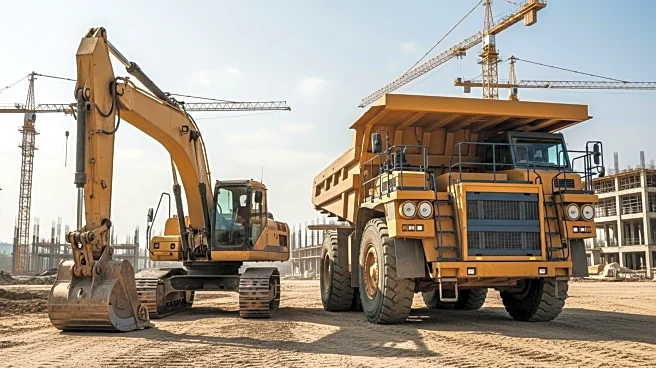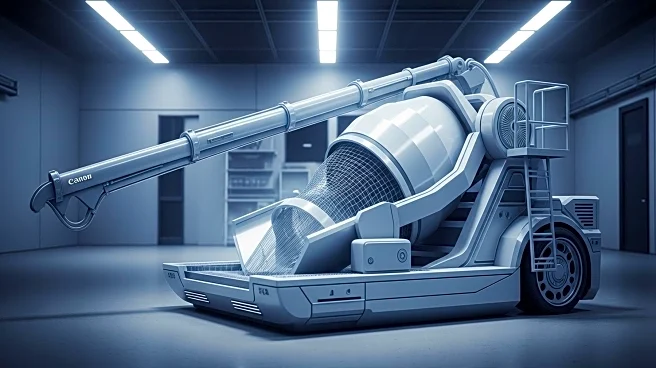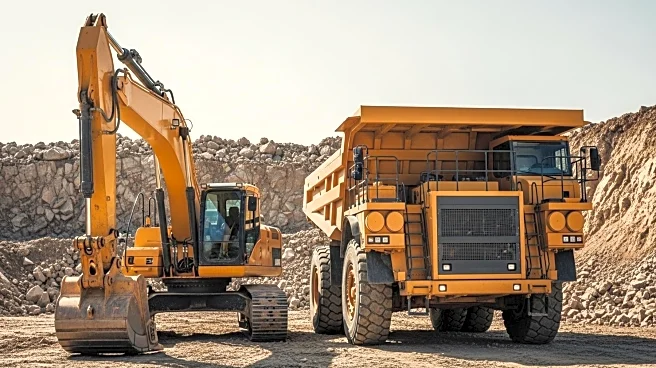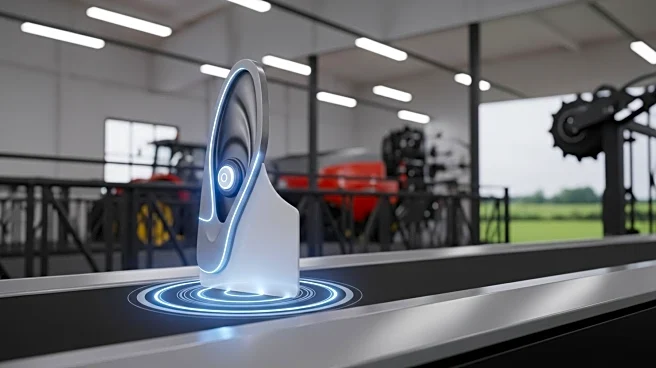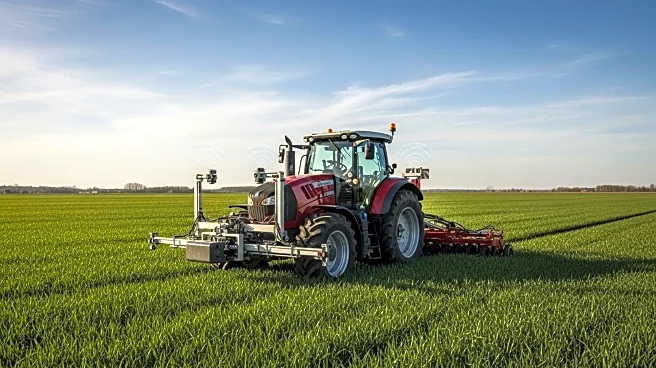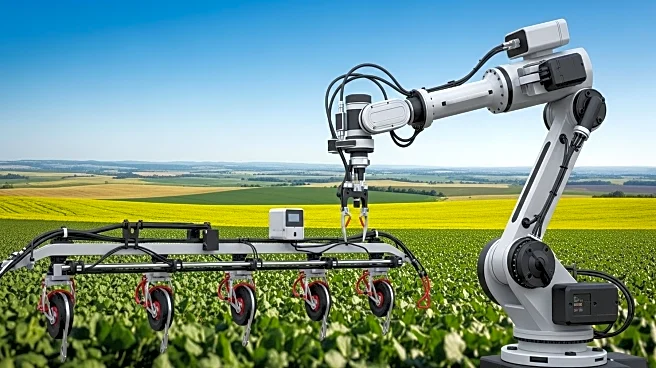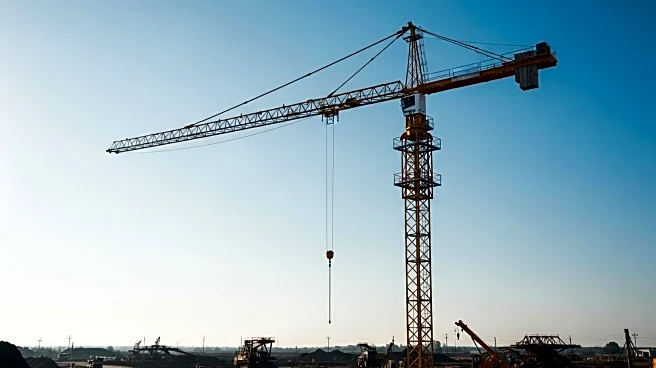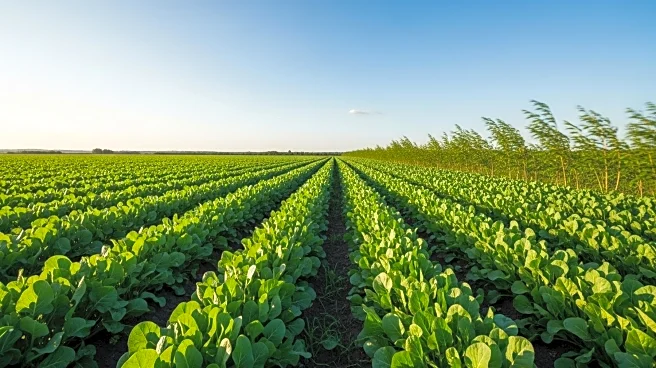What's Happening?
The global agricultural sprayers market is experiencing significant growth, driven by the increasing demand for mechanized and precision farming solutions. Agricultural sprayers, essential for the uniform application of fertilizers, herbicides, pesticides, and other agrochemicals, are crucial for improving crop yield and promoting sustainable farming practices. Technological advancements, such as GPS-enabled spraying systems, drone-based sprayers, and automated boom sprayers, are enhancing efficiency and accuracy in large-scale agricultural operations. In 2024, the market was valued at approximately $2.9 billion and is projected to reach $4.4 billion by 2031, growing at a compound annual growth rate (CAGR) of 6.1%. North America currently leads the market due to its advanced agricultural infrastructure and widespread adoption of modern farming equipment.
Why It's Important?
The growth of the agricultural sprayers market is significant for the agricultural industry as it addresses the increasing global food demand driven by population growth. Precision farming techniques enabled by advanced sprayers help farmers optimize resource use, reduce labor costs, and minimize agrochemical wastage, contributing to environmental sustainability. The adoption of these technologies is crucial for enhancing crop yields and ensuring food security. As emerging markets in Asia-Pacific and Latin America expand their commercial agriculture operations, the demand for efficient and sustainable farming solutions is expected to rise, offering opportunities for market expansion and technological innovation.
What's Next?
The agricultural sprayers market is poised for further growth as emerging markets continue to adopt mechanized farming solutions. Innovations in drone-based spraying, IoT-enabled sprayers, and eco-friendly designs are expected to attract new customers seeking efficient and sustainable solutions. Companies may leverage service offerings, such as maintenance contracts and training programs, to enhance customer retention and increase revenue. Government subsidies and support programs in developing regions provide opportunities for deeper market penetration and expansion.
Beyond the Headlines
The integration of smart technologies in agricultural sprayers, such as IoT and automated systems, is gaining momentum, particularly in Europe, where sustainability and eco-friendly farming practices are prioritized. This trend reflects a broader shift towards reducing chemical usage and environmental impact in agriculture. Additionally, the market faces challenges such as high initial investment costs and maintenance complexities, which may deter small and medium-scale farmers from adopting advanced sprayers.

